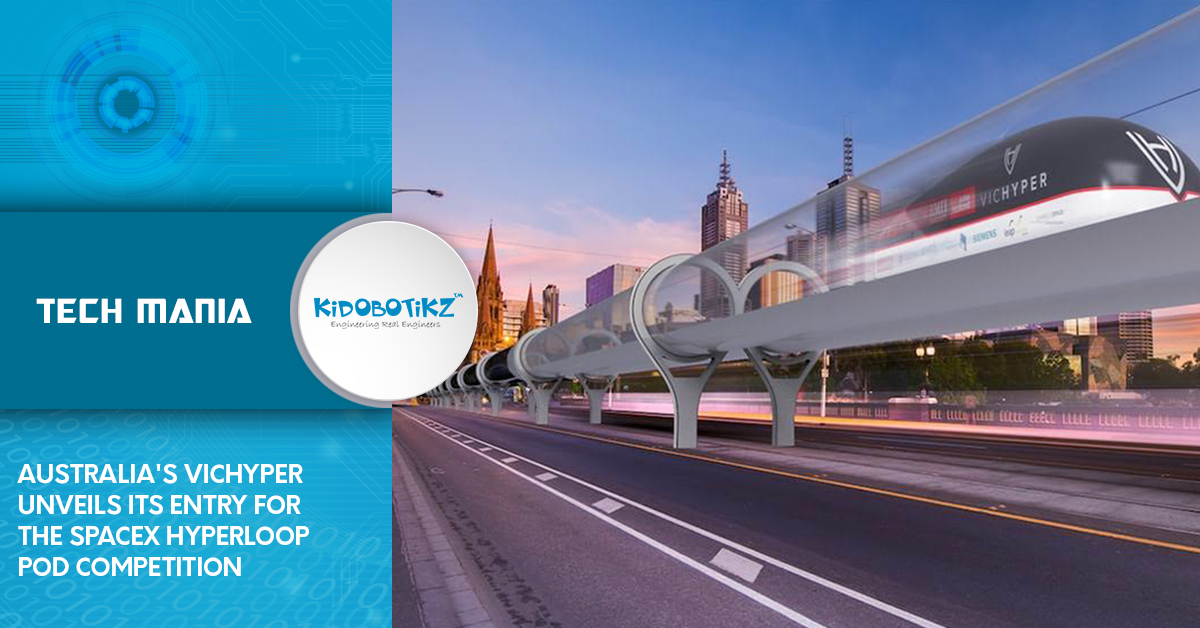


Since Elon Musk revealed details of his proposed Hyperloop in a white paper in 2013, the idea of supersonic travel through vacuum tubes has captured the imagination of the public and engineers around the world – which was exactly the point. SpaceX may not be building the system itself, but it's playing a big part in getting the idea off the ground, including hosting a pod design competition for teams of university students. To find out what goes into creating a Hyperloop pod, we spoke to VicHyper, one of 30 teams whose design was selected to be built and tested in January next year

For the uninitiated, Hyperloop is a proposed mass transit system that would shuttle passengers and cargo at speeds of up to 760 mph (1,223 km/h) – close to the speed of sound – by way of pods in a partial vacuum tube. Those speeds are possible by suspending the pods just off the bottom of the tube to reduce friction, with the help of either magnetic levitation (maglev) or air bearings that create a cushion of air similar to that seen in hovercraft or air hockey tables.
The Hyperloop plans were made open-source, giving startups like Hyperloop Transportation Technologies (HTT) and Hyperloop One a running start. But SpaceX is still interested in accelerating development of the system, and to that end it's hosting the SpaceX Hyperloop Pod Competition, which tasks teams of university students and engineers with designing and building a functioning Hyperloop pod.
The competition attracted over 1,200 submissions, and SpaceX selected 124 of them to present their designs to a panel of judges back in January this year. Of those, 30 made it through to the next round, where they're tasked with creating a full working prototype to be put through its paces on SpaceX's 1-mile (1.6-km) long test track in January 2017. Hailing from RMIT University in Melbourne, Australia, VicHyper was one of those lucky few, making the team the only entrants from the Southern Hemisphere.

"With our design, we're mainly focusing on the braking and acceleration side," Project Leader of VicHyper, Zac McClelland, tells New Atlas. "So we're putting in technology that can be used on wheels, or maglev or air bearing vehicles."
The team's efforts earned them the Braking Subsystem Technical Excellence Award at the design weekend earlier this year, and cemented their spot in the top 30. Shortlisted teams are going on to build and test a functional prototype of their design.
"SpaceX said, 'we want you to come through to show how good your braking systems are, but we want you to simplify it, and put it on wheels, and take the air bearing out'," says McClelland.
Wheels might not sound like part of this futuristic vision, but as McClelland says, removing the extra variables helps the team focus on perfecting a braking and acceleration system that works at high speeds and in a vacuum.
Relieved of not having to face the hurdles of levitation, the team's innovative designs involve the use of a linear induction motor, which if successful, would be the first of its kind to operate in a vacuum. This handles both acceleration and deceleration, with the latter function regenerating some of the power back into the battery. A second braking system, which may be useful for emergency stops, is handled by eddy current (or magnetic) brakes, which are often used to pull up high-speed trains and roller coasters.
Other teams are using similar systems to slow their pods, but according to McClelland, many are using permanent magnets, which need to be actuated in and out, and tend to demagnetize over time. VicHyper, on the other hand, is using an onboard battery to power electromagnets. In a demonstration of the system, the team rigged up a spinning metallic disk, which has electromagnetic coils sitting about 0.4 in (10 mm) off of it.

While VicHyper focuses on putting a stop to Hyperloop pods, other teams are concentrating their efforts on one of two levitation systems: maglev and air bearing. Both techniques have their pros and cons, and the prototype testing should help determine which is the better horse to back.
After a rigorous series of safety checks by SpaceX, the pods will be put to the test over a few days in January next year. Teams will be marked against various criteria as their pods navigate a 1 mile test tube at SpaceX HQ in California at speeds of up to 250 mph (400 km/h), and divided into levitation and non-levitation classes.
Although the teams are competing, it's more friendly than fierce. Having been born of SpaceX's open-source designs, that collaborative spirit has carried across, and it makes sense for VicHyper's braking and acceleration system to be paired with another team's design for levitation. After all, the ultimate goal is the advancement of the Hyperloop system itself, for the benefit of the community rather than corporate interests.
SpaceX is running the Hyperloop Pod Competition from January 27 to 29, 2017, with a second instalment in the following (Northern Hemisphere) summer, which will focus purely on maximum speed. The VicHyper team describes the pod design in the video below.
Sources: New Atlas, VicHyper, SpaceX
